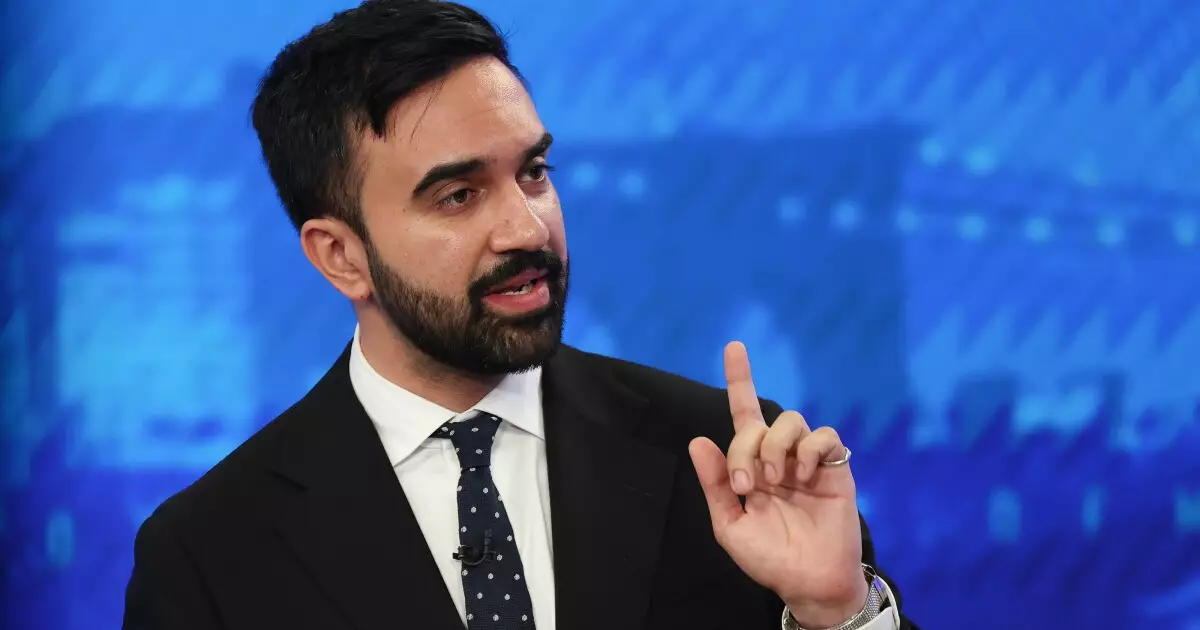At the heart of New York City’s current political discourse lies a contentious issue that never seems to fade: the affordable housing crisis. State lawmaker and democratic socialist Zohran Mamdani, buoyed by the endorsements of prominent figures like Alexandria Ocasio-Cortez and Bernie Sanders, seeks to confront this dire situation by proposing an audacious plan that entails borrowing an additional $70 billion over the next decade. While the intent is commendable, the execution of such a plan raises significant questions about fiscal responsibility and the long-term consequences for the city and its residents.
Mamdani’s proposal, which is designed to build 200,000 new units of affordable and rent-stabilized homes, is undeniably ambitious. However, it intertwines with a complex financial web that poses risks to the city’s fiscal health. With New York City already grappling with over $104 billion in outstanding debt, the suggestion of tacking on another $70 billion without a clear reallocation of current resources signals a reckless leap into an already murky financial abyss. It’s a capricious gamble—one that, if it misfires, could plunge the city into further turmoil.
The Tug-of-War Over Financial Viability
Mamdani’s reliance on borrowing draws attention to both the need for affordable housing and the constraints of city finances. New York City spends roughly $7.7 billion annually on debt servicing; thus, adding to this burden without a concrete plan for reallocation or efficiency raises alarms amongst fiscal conservatives. Howard Cure from Evercore Wealth Management aptly labels Mamdani’s proposal as “very ambitious,” noting that it would require state approval and come at a time when interest rates are high. This combination of excessive borrowing and high-interest rates could potentially exacerbate financial constraints rather than alleviate them.
The ongoing debate about how to address the housing crisis is further complicated by state limitations on local government borrowing against their property tax bases. This means that Mamdani must tread carefully, lest he raises expectations without the means to fulfill them. His plans rely heavily on a regulatory landscape that is unstable—an unacceptable risk for a city that has prided itself on fiscal prudence over the decades.
Taxing Policies: Balancing Acts or Punitive Measures?
To foot the bill for his housing initiative, Mamdani envisions a sharp hike in corporate taxes alongside a new 2% income tax on city residents earning over $1 million a year. While these measures appear progressive and align with the ideals of wealth redistribution, they raise significant concerns about their wider economic impact. Increased corporate taxes could lead to businesses relocating out of the city or reducing their workforce—moves that would, paradoxically, hurt the very individuals Mamdani aims to assist.
Moreover, the new income tax could discourage high earners from living or working in New York City, making housing less of a priority for the affluent while leaving the city to grapple with an eroded tax base. It is crucial that policymakers consider the unintended consequences of their proposals—actions taken under the guise of progressive ideals can often lead to a shrinking economy, stifling the revenue necessary to support public services, including housing.
Compromised Solutions in an Evolving Landscape
In a city where affordability is increasingly elusive, the situation demands creative and pragmatic solutions rather than mere populist promises. While Mamdani energetically pushes his housing agenda, it exists in stark contrast to Mayor Eric Adams’ more conservative approach, which includes adjustments to zoning laws. The Mayor’s “City of Yes” initiative demonstrates a pragmatic effort to adapt to the evolving needs of New Yorkers, promoting increased housing supply without massive new debt or burdensome taxes.
The urgency of the housing crisis is not lost on any politician, yet it seems that the solutions are often mired in partisan bickering and ideological clashes. This scenario exposes a significant fault line in the city’s governance—where inventive solutions are often overshadowed by high-stakes political posturing. Mamdani’s ambitious plan is, in essence, a call for bold action, but it risks trivializing the intricacies of the economic landscape and the need for collaborative governance.
Redefining the Narrative: Steps Toward Progress
In the end, the stakes are incredibly high. The future of New York City’s affordability hinges not just on which proposals garner public support, but more importantly, on a coherent strategy that balances visionary aspirations with financial accountability. As taxpayers, we deserve a plan that prioritizes long-term stability over short-term gains. Let us hope that as the political landscape evolves, so too do our methods—and that we embrace a commitment to positive, realistic solutions that serve the people rather than the agendas of ambitious politicians.

